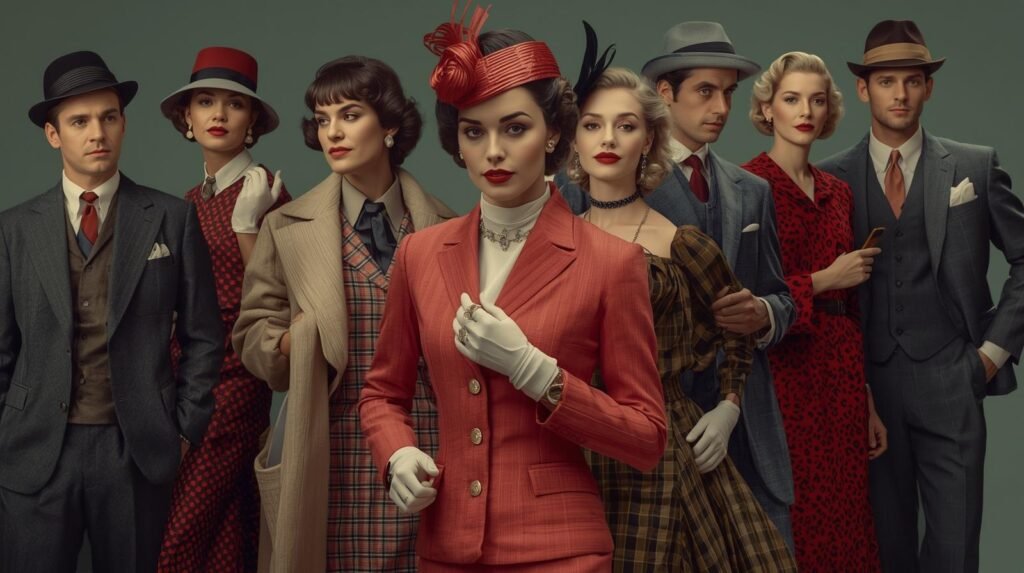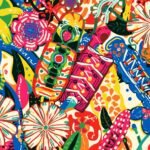The 1950s was more than just a decade of change; it was a statement of identity, culture, and innovation in fashion. After the hardship of World War II, people wanted to feel good again, and fashion became a powerful way to express optimism, freedom, and sophistication. But many people today don’t understand how deep the influence of 1950s fashion really goes. From Hollywood glamour to daily wear, this decade shaped modern style forever.
The problem is that while today’s fashion moves fast and often feels disposable, the 1950s represented a time when clothing told stories — about pride, craftsmanship, and individuality. Reconnecting with this fashion era is not about nostalgia, but about understanding how timeless elegance can still influence modern wardrobes.
The Post-War Fashion Revolution
When World War II ended, people wanted to move away from rationing and dull clothing. The 1950s opened the door to creativity. Designers like Christian Dior introduced the “New Look”, featuring full skirts, cinched waists, and soft shoulders — a design that celebrated femininity. According to 1950s in fashion, this era was marked by a return to luxury fabrics and detailed tailoring.
Men’s fashion also took a major turn. The rugged military look slowly faded as suits, ties, and polished shoes became symbols of respect and stability. The 1950s man dressed sharply, often inspired by celebrities like James Dean and Frank Sinatra.
Women’s Fashion: Grace and Glamour
The 1950s was truly a golden era for women’s fashion. After years of wartime simplicity, women embraced curves, color, and couture. Designers celebrated femininity in every form, creating clothing that highlighted the waist and added fullness to skirts.
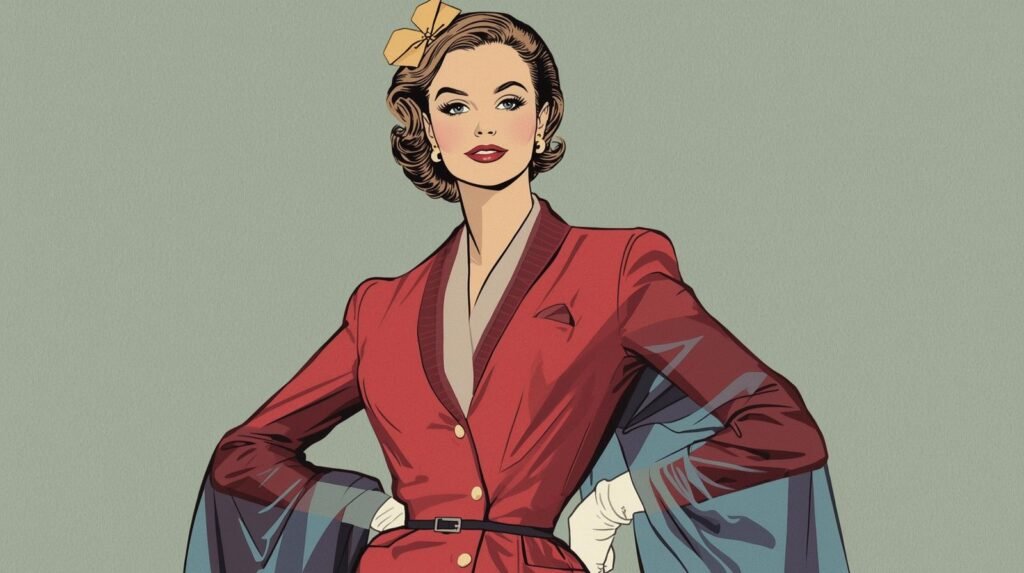
Popular styles included:
- Full circle skirts paired with petticoats
- Tight-fitting bodices that emphasized the hourglass shape
- Tea-length dresses for both daytime and evening events
- Pencil skirts and fitted blouses for office wear
Accessories played a major role — gloves, pearls, scarves, and hats became essential finishing touches. Women like Audrey Hepburn, Marilyn Monroe, and Grace Kelly became global fashion icons whose influence still defines elegance today.
Men’s Fashion: Classic, Cool, and Confident
While women embraced glamour, men’s fashion focused on structure and confidence. The average 1950s man had a wardrobe full of tailored suits, clean shirts, and leather shoes.
However, this decade also saw the rise of youth culture — a rebellion against the traditional. The “greaser” look emerged, made famous by James Dean’s movie Rebel Without a Cause. Teenagers began wearing jeans, white T-shirts, and leather jackets, setting the stage for the cool, rebellious fashion movement of later decades.
The 1950s gave men two clear paths: either remain the gentleman or embrace the rebel. Both looks became timeless symbols of masculinity in different ways.
Fabrics, Colors, and Patterns
Another defining feature of 1950s fashion was the explosion of color and texture. Wartime clothing was dull due to material shortages, but the postwar era changed everything. Bright reds, soft pinks, mint greens, and polka dots filled the wardrobes of the era.
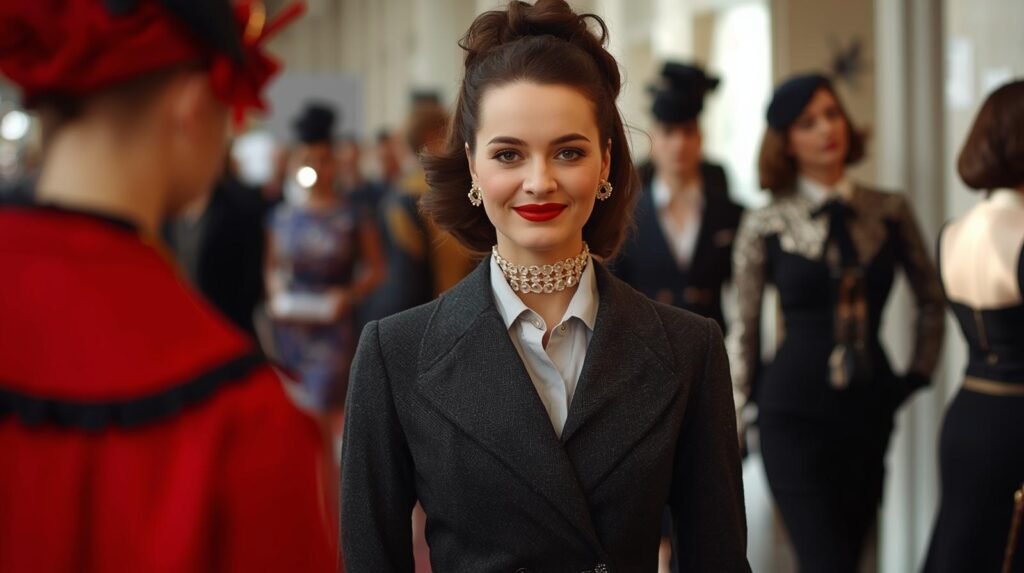
Common fabrics included cotton, wool, nylon, and silk blends, all used to create durable yet beautiful outfits. Patterns like plaid, stripes, and florals became mainstream, symbolizing optimism and modernity.
The Influence of Hollywood
Hollywood played a massive role in shaping global fashion during the 1950s. Every new film inspired trends across the world. Actresses like Marilyn Monroe made glamourous dresses iconic, while Audrey Hepburn popularized simplicity and sophistication through movies like Roman Holiday.
For men, Elvis Presley and Marlon Brando introduced rock-and-roll rebellion. Their edgy styles inspired millions of young fans to reject conformity and define their own identities through fashion.
Youth Culture and Teenage Fashion
The 1950s saw the birth of teenage fashion as a separate identity. Before this, young people mostly dressed like adults. But now, the youth had their own style — denim jeans, colorful sweaters, poodle skirts, and saddle shoes became symbols of fun and freedom.
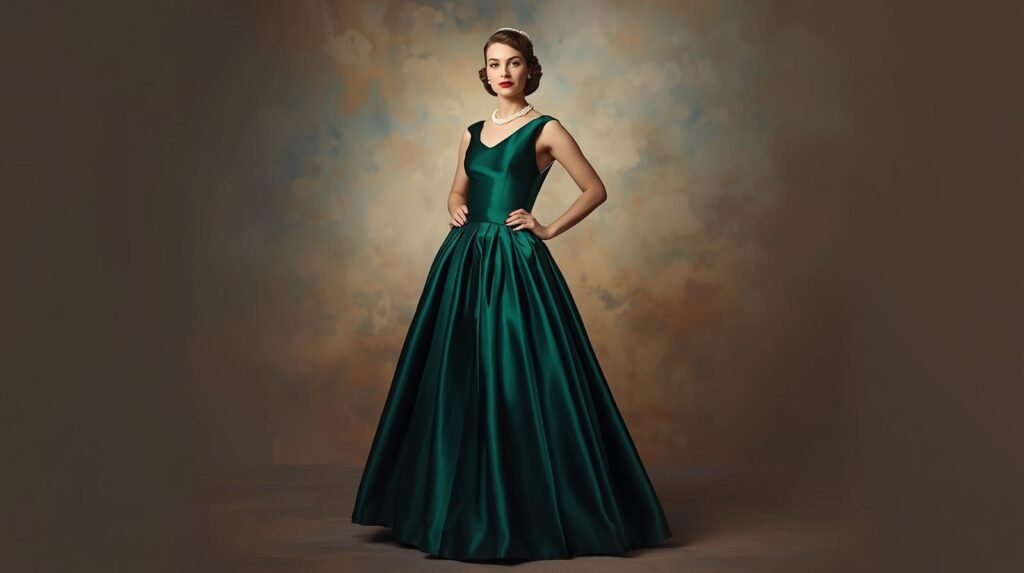
Music also shaped fashion. The rise of rock and roll encouraged bolder looks. Teenagers began experimenting with hairstyles like ponytails and pompadours, reflecting a growing sense of individuality.
Global Impact and Modern Influence
The impact of 1950s fashion continues even today. Many designers and stylists still draw inspiration from the silhouettes and detailing of this era. Modern brands frequently reimagine the 1950s look — full skirts, structured dresses, and fitted suits remain staples in both casual and formal wear.
The resurgence of vintage fashion and retro trends on social media platforms like Instagram and Pinterest shows how timeless this decade’s aesthetic truly is. People are turning back to slow fashion — a concept the 1950s mastered naturally through craftsmanship and quality.
Why 1950s Fashion Still Matters Today
In today’s world of fast fashion, the 1950s remind us that style is not about speed, but about substance. The clothes were built to last, made with care, and meant to express confidence. Modern fashion could benefit from revisiting the principles of quality, simplicity, and elegance that defined that era.
For those seeking inspiration, the lesson from the 1950s is clear: true fashion never fades — it evolves.
FAQs – 1950s Fashion
Q1. What defined 1950s fashion for women?
1950s women’s fashion was defined by elegance and femininity. Full skirts, fitted bodices, and hourglass silhouettes became popular. Designers like Christian Dior brought glamour back after the war, making fashion luxurious once again.
Q2. What kind of clothes did men wear in the 1950s?
Men in the 1950s wore tailored suits, dress shirts, and ties for formal occasions. For casual wear, jeans, leather jackets, and T-shirts became trendy due to Hollywood icons like James Dean and Elvis Presley.
Q3. Why is 1950s fashion still popular today?
1950s fashion remains popular because of its timeless elegance and focus on quality craftsmanship. Modern designers often recreate vintage styles from this era, celebrating its simplicity and sophistication.
Q4. What colors and fabrics were common in 1950s fashion?
Bright colors like red, pink, turquoise, and yellow were widely used. Fabrics such as cotton, wool, silk, and nylon were preferred, often with playful prints like polka dots, plaid, and floral patterns.
Q5. How did Hollywood influence 1950s fashion?
Hollywood played a massive role in shaping global trends. Stars like Marilyn Monroe, Audrey Hepburn, and Grace Kelly set the tone for women’s fashion, while Elvis Presley and Marlon Brando influenced youth and men’s styles.
Conclusion
The 1950s fashion era was not just about clothes — it was about cultural rebirth and individual identity. It symbolized hope, creativity, and pride after years of hardship. Today, revisiting that era gives us valuable insights into sustainable style, gender expression, and the art of dressing with confidence.
Whether you love the classic elegance of Grace Kelly or the rebellious charm of James Dean, 1950s fashion continues to influence everything from red carpet looks to street style. The golden age of fashion still shines bright, reminding us that timeless style will always find its way back.
For an in-depth look at how men’s style evolved before the 1930s, check out this detailed feature on Men’s Fashion From the 1920s.”

